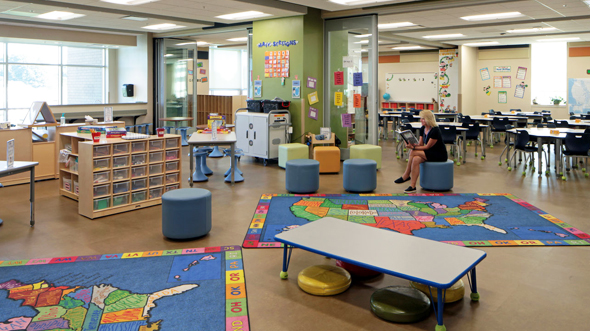
BLOG
—
The ABCs of K-12 Facility Condition Assessments
Facility condition assessments should be the foundation when leaders of K-12 institutions start planning capital improvements. FCAs ascertain the estimated life of a school building and key physical features, calculate replacement costs and implement a workable program to maintain assets over time. When conducted well, this process enriches facility investment, deepens stewardship among stakeholders and improves educational outcomes.
Now more than ever, educators are fine-tuning their learning environments to keep pace with emerging technologies and methodologies. Studies have shown that healthy learning environments are clean, quiet, safe and comfortable. The condition of school facilities impacts student performance and attendance. Schools in better condition report better student behavior, and teachers with appropriate resources report more effective student performances.
School buildings across the U.S. range in age and design. Some are relatively new and feature energy-efficient windows and a digital infrastructure, while others were built in the early to mid-20th century and need to be retrofitted to meet today’s architectural and technology standards. An FCA helps school leaders understand the immediate and long-term needs of a school, regardless of the age and condition of the building and its assets.
FCAs start with an evaluation of the general health of physical facilities by identifying and prioritizing deficiencies and forecasting costs based on multiple scenarios. They incorporate proven deficiency and lifecycle standards to help prioritize maintenance and repair needs, identifying the current or anticipated condition of real property assets to establish a comparative evaluation protocol for a large inventory of features—from roofs to flooring, windows to lighting and HVAC systems to communications infrastructure. This data-based framework provides school administrators with actionable and defensible data to make informed, cost-effective planning decisions.
When conducted by an independent third party, FCAs provide unbiased, expert evaluations that integrate and leverage internal school facility knowledge. Before a firm is hired to perform an FCA, there are measures school administrators and facility managers can take to prepare. The more information a school district has on its facilities, the more streamlined an FCA can be. Districts that have well-organized information and reliable and updated equipment inventories—detailing characteristics such as size, age and renovation timing—have a head start.
By using FCA information to prioritize spending, school administrators can proactively plan for renovating and replacing facilities and assets. School buildings of all ages are vital hubs for communities, and leadership must plan accordingly to ensure they remain thriving learning and activity centers for years to come.
Stay tuned for more on this topic. This blog is the first in a series that will explore the benefits of FCAs and how they can support capital planning to improve the K-12 learning environment.

Jessica Goodell
Woolpert Senior Consultant Jessica Goodell, PE, has 13 years of experience in conducting facility condition assessments and forensic investigations. She has worked with some of the largest school districts in the U.S. and is skilled at not only understanding facilities and equipment but communicating data and report findings for K-12 institutions.


